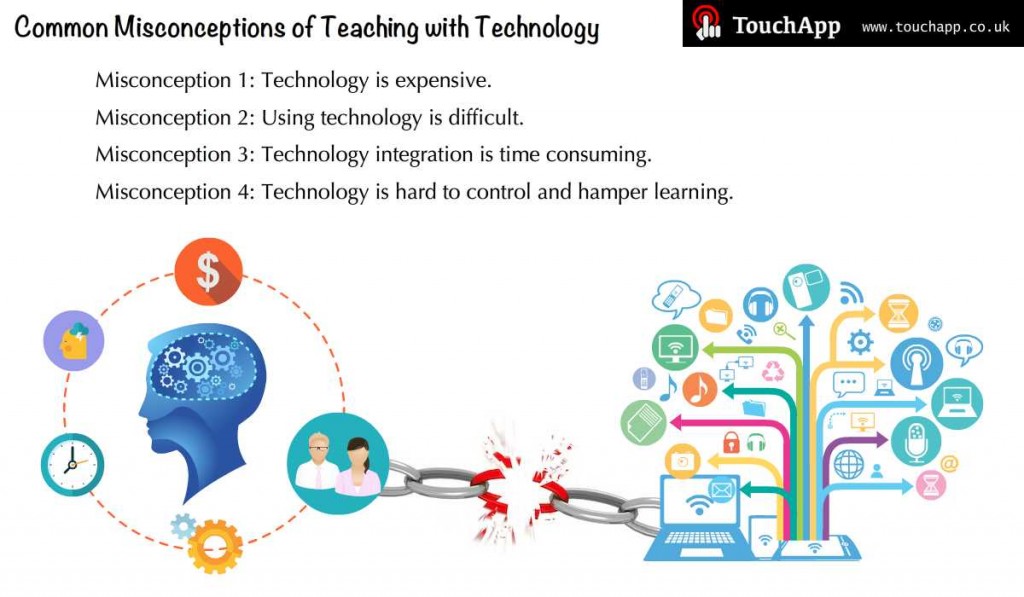The progress of technology is disrupting traditional industries and changing every aspect of our life. In education, integration of technology starts to reconstruct the teaching and learning process and lead to new pedagogy. Although holding great promise, technology has not been fully accepted by educators and opinions vary greatly about the benefits of embracing educational technology. In an effort to open up the mind and convince hesitating teachers, here we highlight some common misconceptions about technology in education.
Misconception 1: Technology is expensive.
With limited budget across the education sector, decision makers become very cautious of allocating funds to improve current technology infrastructure. Technology does appear expensive, but the gains of introducing technology can offset costs over time. Firstly, educational technology can save time and effort of teachers, improving their efficiency and boosting teaching outcomes dramatically. Secondly, the cost of content in digital format reduces significantly, printed textbooks are less environmental friendly and much more expensive than their digital alternatives. There are also many creative ways to introduce technology with low budget. For example, schools can encourage BYOD and BYOT (Bring Your Own Device/Technology) programs, or investigate to use free web resources with existing infrastructures.
Misconception 2: Using technology is difficult.
Technology is changing so rapidly, and it is difficult to become an expert with all the new gadgets. Just a few years ago, computers and smart boards are the main means of technology in schools. Nowadays, tablets such as iPads gain popularity within education sectors. Newly emerged technology such as Oculus Rift or Leap motion may enter our schools in the next few years. But the good news is that technology is becoming easier to use. For instance, you don’t need an instruction manual to use iPad, its user-friendly interfaces guide the users seamlessly. The next generation educational technology will only get better. And with the Internet at your fingertips, it is not hard to get the necessary information when you need it. Educators should move beyond self-imposed beliefs about the difficulty in using technology and be confident to try new things to improve teaching and learning.
Misconception 3: Technology integration is time consuming.
We probably all heard of the time excuse somewhere preventing us moving forward with technology integration. Teachers are very busy professionals, and all sorts of mandates and standards leave no desire of many educators to try new approaches. But it is important for educators to realize that our students now live their lives with technology and we should make time for technology to relate better with our students. It may take time to starting out on teaching with technology, but like all experiences, as it turns into a routine, it will be quicker and easier. And there are many usages of technology that can actually help teachers to save time such as managing students’ profile and grading assignments.
Misconception 4: Technology is hard to control and hamper learning.
Teachers and parents may worry that introduction of technology in school will distract kids and impede their learning. There are also concerns about security issues, as children may be exposed to inappropriate or dangerous websites as well as online stalkers. The way to address these concerns is by introducing security measures as well as encouraging the culture of Digital Citizenship. There are all manner of tools to limit the content that can be accessed or help teachers monitor the students’ usage of the devices. Teachers should not be afraid of giving up a certain amount of control to students. A healthy and innovative culture of learning will motivate students to take their own responsibility and better prepare them for the real world.
All of the above misconceptions promote a sense of fear among educators and impede the adaption of educational technology. But we can’t turn a blind eye to the fact that technology is going to pervade into every aspects of education and changes, both subtle and disruptive, are inevitable. Teachers, technologists and other stakeholders such as government should work together and make the best use of technology to improve teaching and learning and prepare our children for the future.
Follow us on Twitter: @TouchApp_uk
From Mobile App development company TouchApp
![]()
